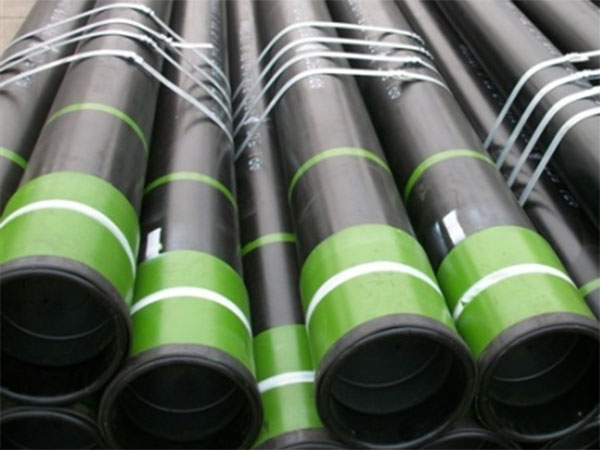
API 5CT Casing Pipe Dimensions and Wall Thickness Specifications
|
Outside Diameter (OD) |
Wall Thickness Range (in / mm) |
Weight (lb/ft) |
|
4½″ (114.3 mm) |
0.205–0.337″ / 5.2–8.6 mm |
9.5 – 15.1 |
|
5″ (127 mm) |
0.220–0.362″ / 5.6–9.2 mm |
11.5 – 21.4 |
|
5½″ (139.7 mm) |
0.244–0.750″ / 6.2–19.1 mm |
14.0 – 40.5 |
|
6⅝″ (168.3 mm) |
0.288–0.475″ / 7.3–12.1 mm |
~20 – ~32 |
|
7″ (177.8 mm) |
0.231–0.540″ / 5.9–13.7 mm |
~17 – ~57 |
|
7⅝″ (193.7 mm) |
0.300–0.750″ / 7.6–19.1 mm |
~24 – ~47 |
|
8⅝″ (219.1 mm) |
0.264–0.557″ / 6.7–14.1 mm |
~24 – ~49 |
|
9⅝″ (244.5 mm) |
0.312–0.672″ / 7.9–17.1 mm |
~32 – ~75 |
|
10¾″ (273.1 mm) |
0.279–0.797″ / 7.1–20.2 mm |
~32 – ~85 |
|
11¾″ (298.5 mm) |
0.333–0.489″ / 8.5–12.4 mm |
~42 – ~60 |
|
13⅜″ (339.7 mm) |
~0.300–0.600″ |
~83 |
|
…up to 20″ (508 mm) |
Wall thickness up to 16 mm |
Wide weight range |
The length grades of the casing are generally R1, R2, R3, among which the range of R1 is approximately 4.88-7.62 m; The range of R2 is approximately 7.62-10.36 m; The range of R3 is approximately ≥ 10.36 m.
Standard OD coverage range: from a minimum of 4½ "(114.3 mm) to a maximum of 20" (508 mm).
Allowable deviation of wall thickness: Standard allowable wall thickness -12.5% (minimum value).
Heat treatment and manufacturing methods
The casing can be produced in seamless or resistance welded forms, etc. Among them, the heat treatment methods vary depending on the steel grade of the casing.
High-strength grades such as P110, C90, and T95 require quenching and tempering, with full-body treatment.
N80T, R95 and others also require heat treatment. L80, C90 and T95 have hardness requirements for sour service.
For sleeves produced by welding, it should be noted that the weld seam should be heated to at least 540 °C to remove untempered martensite.
Chemical composition and mechanical properties
API 5CT strictly stipulates the chemical element content indicators of the casing, including carbon content of 0.34-0.43%, manganese content of ≤1.90%, phosphorus content of ≤0.030%, sulfur content of ≤0.030%, etc. Among them, the L80 steel grade contains chromium of 12.0-14.0%, and the P110 steel grade contains molybdenum of 0.15-0.25%.
The minimum yield strength of J55 steel grade is 379MPa, while that of P110 steel grade can reach up to 965MPa.
The elongation requirement is set within the range of 18% to 32% depending on the steel grade.
Hardness indicators such as Brinell hardness of L80 steel grade ≤241HB.
Common connection methods
Casing: Common ones include BTC (buttress), SC (short round tooth), LC (long round tooth), and premium connections (such as HYD).
Tubing: NU (non-upset) and EUE (outward expanded Tubing) ends, with the latter end thickened.
Summary
API 5CT casing tubing standard is widely used in wellbore structure design and construction, covering the entire process from materials, manufacturing, performance testing to connection methods and identification. Different steel grades correspond to different formation pressures and environments (such as H₂S, deep Wells, sand layers, etc.). For instance, P110 is selected for deep Wells, while L80/C90 are used in highly corrosive well sections.